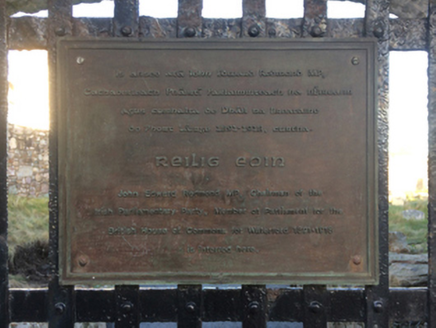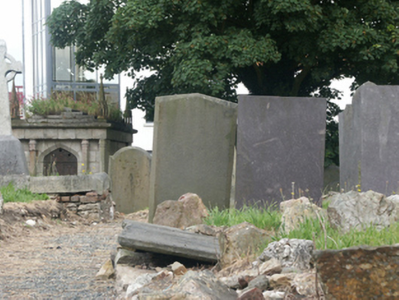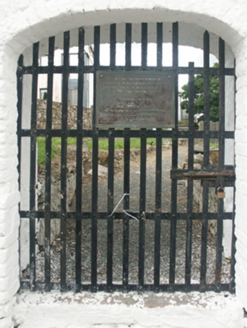Survey Data
Reg No
15502184
Rating
Regional
Categories of Special Interest
Architectural, Artistic, Historical, Social
Original Use
Mausoleum
In Use As
Mausoleum
Date
1825 - 1830
Coordinates
304650, 121901
Date Recorded
10/01/2007
Date Updated
--/--/--
Description
Freestanding single-bay single-stage mausoleum, built 1828, on a rectangular plan. Part overgrown cut-granite stepped roof with cast-iron "flèche" or "spirelet" pinnacles to corners. Granite ashlar walls on cut-granite plinth with cut-granite monolithic piers to corners supporting beaded cornice on blind frieze. Tudor-headed door opening between paired clustered colonettes with cut-granite step threshold, and cut-granite flush block-and-start surround having chamfered reveals framing cast-iron panelled double doors having quatrefoil-perforated overpanel. Set in unkempt graveyard with crocketed cast-iron railings to perimeter centred on crocketed cast-iron gate.
Appraisal
A mausoleum representing an important component of the early nineteenth-century built heritage of Wexford with the architectural value of the composition, 'a fine monument [erected by John Hyacinth Talbot (1794-1868)] over the vault wherein his wife [Anne Eliza Talbot (née Redmond) (1799-1826)] is interred' (Lacy 1863, 418), confirmed by such attributes as the compact rectilinear plan form centred on a restrained doorcase; the construction in a silver-grey granite demonstrating good quality workmanship; and the polygonal pinnacles embellishing the roofline. NOTE: Later internments include members of the Redmond political dynasty including John Edward Redmond MP (1806-65) of The Deeps (see 15703742); John Edward Redmond MP (1856-1918), Chairman of the Parnellite Minority (fl. 1891-1900) and Chairman of the Irish Parliamentary Party (fl. 1900-18); and Captain William Archer Redmond MP (1886-1932).





